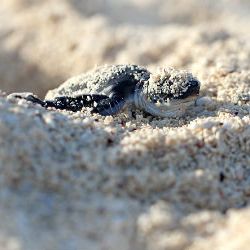Snake-Necked Turtles To Make A Return To Indonesia

Singapore will be sending several snake-necked turtles to Indonesia. The species of turtle is actually endemic to Rote Island in East Nusa Tenggara. Singapore is repatriating the species through a re-introduction program run by the Wildlife Conservation Society Indonesia Program (WCS-IP) and Wildlife Reserve Singapore. The turtles will be shipped to Indonesia over the next few months and have been bred by a variety of conservation organisations.
Breeding program
The organisations that participated in the breeding program came from a variety of countries including the United States and Austria. 26 individual turtles bred internationally are currently being housed at Singapore Zoo. However currently many of the turtles that are supposed to be returned to their natural habitat in Indonesia are in limbo because the terms of their return are still under negotiation.
Endangered species
The International Union for Conservation of Nature has classified the Rote Islands snake-necked turtle as being critically endangered and the species is on the IUCN red list. Roti Island is an alternative name for Rote Island. Unfortunately, the snake-necked turtle is no longer found in its natural habitat which is Rote Island’s Peto Lake. The reason for their extinction from their natural habitat due to over-exploitation and the conversion of the natural lake and the surrounding area into farmland.
Phased repatriation
The return of 26 snake-necked turtles from Singapore is the first of several rounds of repatriations and it is not immediately clear how many more turtles from the species exist globally. There will be several phases of the repatriation with turtles coming from different sources including North America and Europe and it is expected that repatriation will commence and even be completed before the end of the year.
Ancient species
Snake-necked turtles are famous for their incredibly striking long necks which are so long that they are unable to withdraw their heads all the way back into their shells. According to a global conservation initiative, The Edge of Existence, this species of turtle actually belongs to an ancient relic subspecies that was once distributed across Australia, New Guinea and Rote Island. The major threat to the snake necked turtle is that it only occurs in three separate populations across 70 square kilometers of available habitat and the species is hunted for the pet trade because individual turtles sell for a high price.



